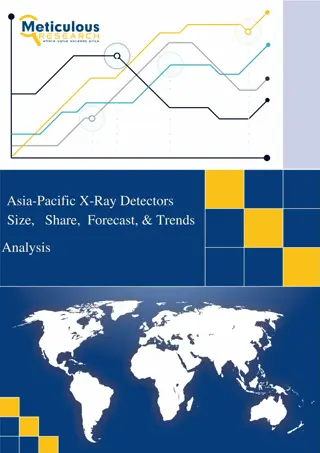Insights into Radio and X-ray Emission in Radio-Quiet Quasars
Radio galaxies are categorized as radio-loud or radio-quiet based on the presence of jets and lobes. Unlike radio-loud quasars, the nuclear radio emission in radio-quiet quasars does not originate from large-scale jets. Possible explanations include broad absorption lines, magnetically accelerated electrons emitting synchrotron radiation, and thermal emission from an accretion disk wind. This study focuses on a sample of radio-quiet PG quasars to analyze the relationship between radio and X-ray luminosity.
Download Presentation

Please find below an Image/Link to download the presentation.
The content on the website is provided AS IS for your information and personal use only. It may not be sold, licensed, or shared on other websites without obtaining consent from the author. Download presentation by click this link. If you encounter any issues during the download, it is possible that the publisher has removed the file from their server.
E N D
Presentation Transcript
Radio and X-ray emission in radio-quiet quasars Katrien C. Steenbrugge, Katherine M. Blundell and Zdenka Kuncic Instituto de Astronom a, UCN Department of Physics, University of Oxford School of Physics, University of Sydney
Introduction Radio galaxies are classified as either radio-loud, i.e. having jets and lobes, or radio-quiet, where only radio emission from the nucleus is detected. Cygnus A, 5 GHz VLA A-D image, Carilli 1991
Question Where is the nuclear radio emission in radio-quiet quasars coming from? For radio-loud quasars the nuclear emission is assumed to be from a superposition of jet blobs in the inner part of the jet. The properties as measured in radio for the nuclei are the same for both categories: i.e. same amount of variability, same compactness, same spectral shape. However, radio-quiet quasars don t have a large-scale jet. For some the radio emission is unresolved even with VLBI observation, so the jet has to be smaller than 1 pc.
Possible explanations 1) The wind responsible for broad absorption lines in about 20% of quasars (BALQSOs) could be responsible, if it exists in all radio-quiet quasars. 2) The nuclear emission comes from magnetically accelerated electrons, emitting synchrotron radiation, located in the corona above the accretion disk. At lower frequencies due to losses you expect a flat spectrum, as observed. The energy of these electrons is used to heat the corona which then produces the observed inverse-Compton X-ray emission (Laor and Behar 2008).
Possible explanations 3) Blundell and Kuncic (2007) assumed that the radio emission is thermal and comes from the optically thin base of an accretion disk wind, which is also responsible for the warm absorber observed in ~50% of Seyfert 1 galaxies. The assumed geometry :
Sample used for the study We use a sample of radio-quiet PG quasars which are in the sample studied by Brocksopp et al. 2006 and Laor & Behar 2008, and add three radio-quiet quasars that are not in Brocksopp et al. sample, but that have detailed spectroscopic studies. We use the X-ray data from Brocksopp et al. and the radio data listed by Laor & Behar. We study a total of 22 sources, with non- simultaneous radio and X-ray flux measurements.
Radio and X-ray luminosity Assuming that the radio emission is free-free emission from an optically thin plasma, one can calculate the X-ray luminosity emitted by this plasma: LX (LR/10)*exp(-h X/kTe). As noted by Laor & Behar, the predicted X-ray luminosity is much larger than the observed X-ray luminosity. However, part of the X-ray emission could be absorbed by the AGN wind itself, as observed in 50% of Seyfert 1 galaxies.
Predicted versus measured X-ray luminosity We can compare the measured versus predicted 0.5 (2 and 5) keV luminosity, without correcting for possible absorption. On average we predict a luminosity 2 orders of magnitude higher than measured at 0.5 keV.
Predicted versus measured X-ray luminosity The amount of absorption from the AGN wind is energy dependent , and we expect negligible absorption at 5 keV, unless the absorber is Compton thick. The difference in luminosity is smaller, but still significant.
Difference in predicted and measured X-ray luminosity The radio and X-ray fluxes were not determined simultaneously, in fact there is an average difference in time of about 15 years. Therefore, for any one source the difference between predicted and measured X-ray luminosity could be explained by variability, as AGN are notoriously variable in the X-ray domain. However, this cannot explain the excess luminosity predicted for all the sources.
X-ray absorption The X-ray absorption as derived from the EPIC spectra by Brocksopp et al. is in all cases small to negligible. However, for two quasars for which there is also a detailed study, the hydrogen column density derived is consistent with compton-thick, consistent with the power-law slope and width of the Fe K line measured by Brocksopp et al. For the remaining 20 quasars the power-law slope and width of the Fe K line are consistent with negligible or little absorption. For five sources (out of 22) we have measured hydrogen column densities and ionisation parameter(s) for an absorber from high resolution spectra or a detailed study of the EPIC spectra.
Calculated absorption We modelled the hydrogen column density needed to bring the predicted X-ray luminosity in agreement with the measured X-ray luminosity for three energies: 0.5, 2 and 5 keV. For 5 sources we used the ionisation parameter measured in modelling the absorption. For the other sources we assumed a neutral absorber, which is most efficient in absorbing the X-rays and thus gives us the minimum column density needed. Alternatively, an ionised absorber with log = 1.5 10-9 W m, a typical value for the ionisation parameter measured for warm absorbers observed in Seyfert 1 galaxies, was assumed.
X-ray absorption We compare the measured neutral hydrogen column density to the one needed to bring into agreement the 5 keV predicted and measured luminosity. The needed column density is orders of magnitude more than that measured Brocksopp et al. Most of the sources would need to be Compton thick to explain the difference.
X-ray absorption PG 1001+054 and PG 1411+442 show evidence for a large hydrogen column density from the power-law slope measured from EPIC data and the large equivalent width of their Fe K line. These two quasars could be Compton thick, and thus consistent with the predicted column density needed. For the remaining 20 PG quasars we can exclude that they have a Compton thick absorber from the small equivalent width of the Fe K line, the EPIC measured power-law slope and in 3 cases from detailed study of the absorber using high-resolution X-ray spectra.
Conclusions We have compared the X-ray luminosity predicted if the radio emission in radio-quiet quasars is due to free-free emission from the optically thin base of an AGN wind for 22 radio-quiet PG quasars. We have modelled the difference in luminosity as due to absorption from an AGN wind, with properties similar to the warm absorber observed in Seyfert 1 galaxies. We find that for 20 sources absorption cannot explain the difference between predicted and measured X-ray luminosity, and conclude that the radio emission cannot be completely explained by free-free emission. For 2 sources a Compton thick absorber is allowed by the spectra, and in these cases the radio emission could be from the base of the AGN wind.






















